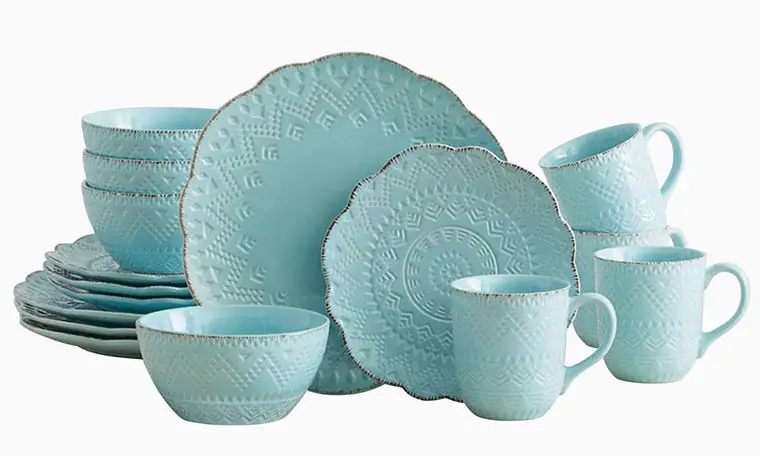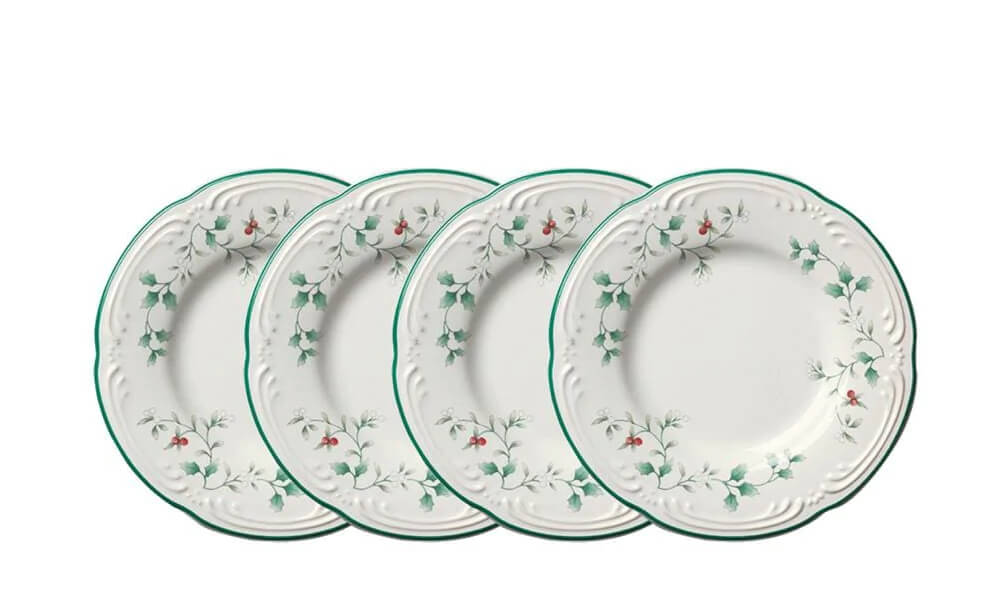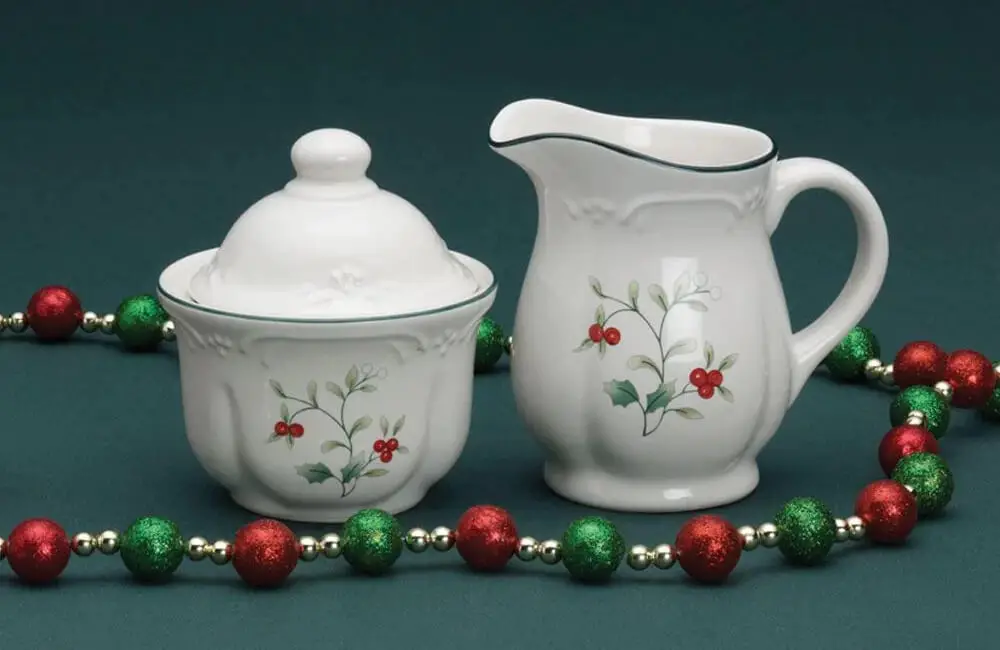Pfaltzgraff is a renowned American companion in the kitchen across the globe.
The Company grew from a limited pottery shop into one of the well-known marketers and designers of drinkware, dinnerware, giftware, ceramic accessories, and other products.
Let’s find out where the Pfaltzgraff products are made.
Pfaltzgraff products are made in China. It is now owned by Lifetime Brands. Pfaltzgraff moved its factory operations offshore in 2005.

Lifetime brand has closed Pfaltzgraff’s 67 stores throughout the U.S. and continues with its Internet presence.
Before China, all Pfaltzgraff products were made in York County, Pennsylvania. But, the Lifetime Brand has changed its production facility.
Pfaltzgraff has gone downhill fast as they have failed to transfer the quality and craftsmanship of their previous factory.

Where is Pfaltzgraff dinnerware made?
Pfaltzgraff dinnerware comes with a “made in China” tag. They are no longer manufactured in the Pennsylvania factory.
In 2005, Lifetime Brands bought the Pfaltzgraff Co. In 2004, Pfaltzgraff earned $148 million in sales revenue. The company’s portfolio was fascinating.
After gaining ownership, Lifetime Brands decided to close all 67 Pfaltzgraff stores around the US. They launched their business model online.
Lifetime Brands also shifted their factories to China. Hence, you will find your dinnerware with a “made in China” tag.

Where is Pfaltzgraff silverware made?
Pfaltzgraff silverware is now made in China. These “made in China” products have been criticized a lot. These “made in China” silverware shows terrible water spots if you let them air dry.
The brand has lost its quality! Pfaltzgraff has thrown away years of German quality for cheaper labor!
Made in China Pfaltzgraff silverware has terrible —
- Water-spots at air dry
- Hard Cleaning
- Scratch
- Rust
The quality of old Pfaltzgraff has fallen.
Related Read: Where is Farberware made
Is Pfaltzgraff made in the USA?
The old Pfaltzgraff products are made in Pennsylvania, USA. In 2005, Lifetime Brand bought the Pfaltzgraff Co. Since then, they have been made in China.
In 1811, Johann George Pfaltzgraff founded Pfaltzgraff in York County, Pennsylvania.
Two brothers, George & Henry, began The Pfaltzgraff Co. to give the shape of the 210 years old Pfaltzgraff pottery.
Throughout history, the first factory was built in 1895 in York County, Pennsylvania. The factory streamlined its production, and day by day, Pfaltzgraff became a renowned American companion in the kitchen.
When did Pfaltzgraff stop being made in the USA?
In 2005, Pfaltzgraff stopped being made in the USA.
The Pfaltzgraff Co. performing well in the market. They grossed $148 million in sales revenue in 2004. But, Pfaltzgraff Co. sold their business to Lifetime Brand in 2005.
Being the owner of Pfaltzgraff Co., Lifetime Brands stopped Pfaltzgraff’s factory in the US. They transferred their production facility to offshore China.
Hence, you will find all Pfaltzgraff products with a “made in China” tag.
When did Pfaltzgraff move to China?
In 2005, Pfaltzgraff moved to China.
If you asked, “Why?” — The nearest answer will be that China is traditionally famous for its ceramic ware and porcelain.
China’s development can’t be imagined without its skilled labor and traditional ceramic and porcelain products.
But, a lot of criticism has been raised addressing “made in China” Pfaltzgraff products. These criticisms are:
- Within a few months, the Chinese dishes get crazed
- When microwaved, the Chinese made bowls emit a terrible odor
- They have crazed, chipped, and permanently strained
- These Chinese made silverware came out rusted, after two washes
- Chinese made silverwares are lightweight
- These Chinese made silverware shows water spots
- Sometimes, Chinese made silverware came scratched
Thus, Pfaltzgraff is losing its market for its poor quality of Chinese products.
Where is Pfaltzgraff Company located?
Pfaltzgraff Company is located in York, Pennsylvania, United States.
The Company is now owned by the Lifetime Brand. Pfaltzgraff Factory Stores, Inc. has 1,000 total employees. The Company generates more than $569.75 million in sales.
You will find 189 companies in the Pfaltzgraff Factory Stores, Inc. corporate family.
The full address of Pfaltzgraff Company is:
140 E Market St York, PA, 17401-1219 United States.
Marsha M Everton is the key person of Pfaltzgraff Factory Stores, Inc.
Is Pfaltzgraff going out of business?
Yes, America’s oldest pottery business is going to be closed! The large consortium — Lifetime Brand purchased the Pfaltzgraff Co. in 2005 from George & Henry brothers.
In 2009, Lifetime Brands closed all Pfaltzgraff stores around the US. They began their business model online.
Besides, Lifetime Brands transferred to the Pfaltzgraff factory in China. You won’t find the touch of old traditional German craftsmanship in Pfaltzgraff products.
Though the popular retail outlets are gone, the traditional name “Pfaltzgraff” has remained.
What is Pfaltzgraff made of?
Pfaltzgraff is made of earthenware, porcelain, stoneware, and bone china.
Pfaltzgraff products are not necessarily very expensive. Their dishes are beautiful, interesting, and useful.
Current Pfaltzgraff dinnerware patterns are made primarily of porcelain and stoneware. For over 200 years, the Pfaltzgraff brand has been associated with the highest quality ceramic products.
Pfaltzgraff patterns like Yorktowne, Naturewood, Folk Art, and Pistoulet have become best-loved dinnerware in America.
The ingredients of Pfaltzgraff have made it durable and versatile. The “made in USA” Pfaltzgraff dishes are safe considering lead level. They contain 60 ppm lead which is considerable for the health issue.
Pfaltzgraff stated that their products are safe. They added that their products have been tested by independent laboratories, accredited, and met all federal standards.
Sources
- https://lifetimebrands.gcs-web.com/news-releases/news-release-details/lifetime-brands-acquire-pfaltzgraff-co — Lifetime Brands to Acquire the Pfaltzgraff Co.
- https://www.dnb.com/business-directory/company-profiles.pfaltzgraff_factory_stores_inc.a8ff3438455e033bad8385e1ac85f8dc.html — Company Profile of Pfaltzgraff Factory Stores, Inc.
- https://www.stanglpottery.org/PfaltzgraffClosing.htm#:~:text=Pfaltzgraff%2C%20at%20one%20time%20America’s,large%20consortium%20’Lifetime%20Brands‘. — The Pfaltzgraff outlet retail store is now closed.